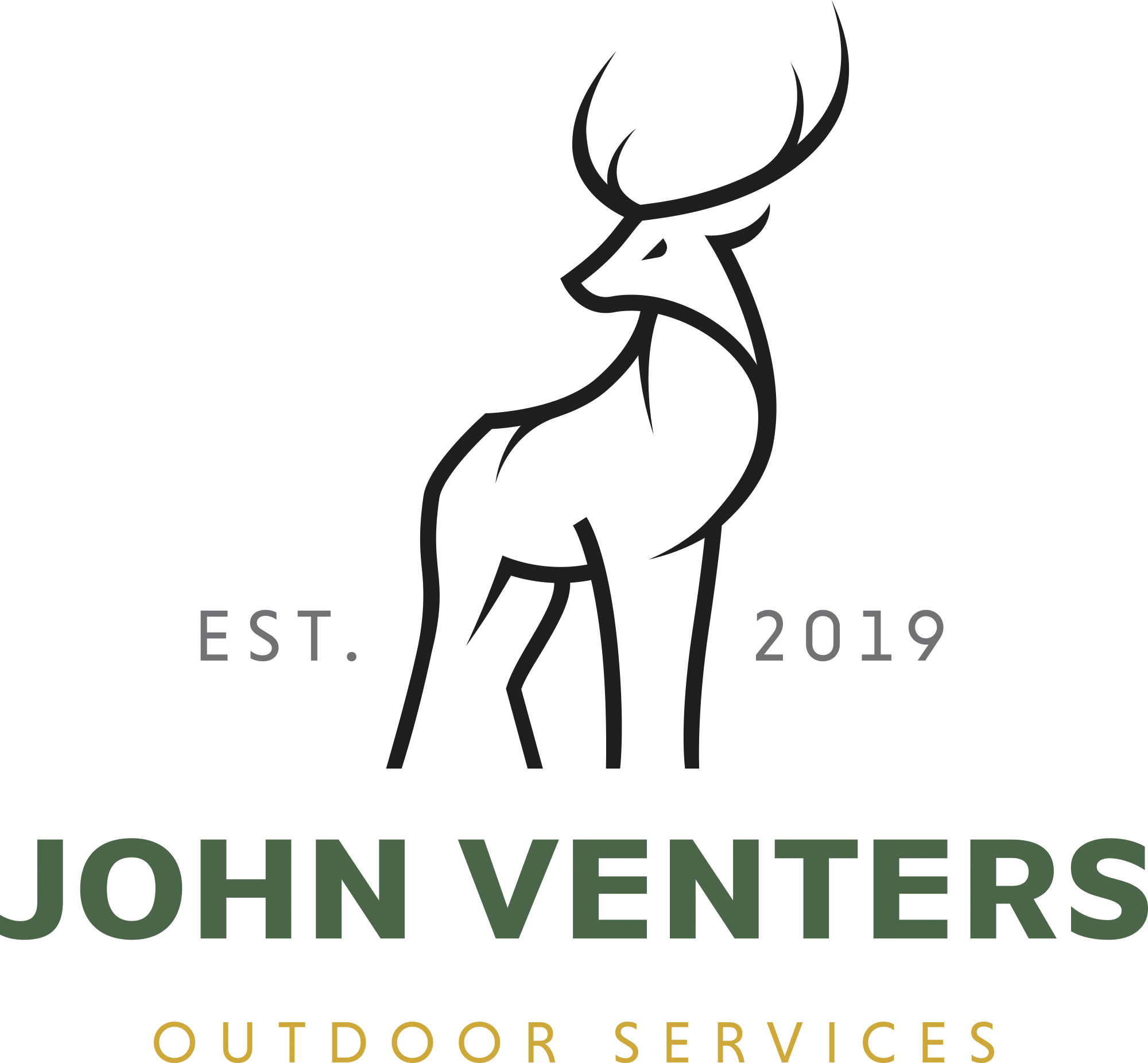John Venters Outdoor Services
Land and estate management services focus on the efficient use, maintenance, and development of land to maximise its value and sustainability. Whether for farming, forestry, or conservation, our services help preserve natural resources while supporting long-term land productivity and profitability.
01. Deer Management
Deer management is a crucial practice aimed at maintaining a balanced ecosystem by controlling deer populations and minimising their negative impacts on both the environment and human activities. Overpopulation of deer can lead to overgrazing, which harms plant species, disrupts forest regeneration, and affects biodiversity. Additionally, deer can cause significant damage to agricultural crops, landscapes, and even pose safety risks through vehicle collisions. By carefully monitoring deer populations and implementing appropriate measures, we can ensure that deer populations remain healthy and sustainable, while mitigating their impact on surrounding communities and ecosystems. Ethical considerations, public safety, and the preservation of biodiversity are key components of successful deer management programs.

02. Land Restoration
Land restoration is the process of rehabilitating degraded or damaged ecosystems to restore their health, function, and biodiversity. This practice addresses a wide range of environmental issues, including soil erosion, deforestation, desertification, and habitat loss, which are often caused by human activity, climate change, or natural disasters. Successful land restoration involves a combination of techniques such as reforestation, soil conservation, and the reintroduction of native plant species to rebuild natural ecosystems. By restoring degraded land, we not only improve biodiversity but also enhance ecosystem services like water filtration, carbon sequestration, and crop productivity. Ultimately, the goal is to restore the balance of natural systems, fostering resilient landscapes that can withstand environmental pressures and benefit both wildlife and people for generations to come.
03. Fencing
Fencing and surveying are integral components of land management and conservation efforts, ensuring boundaries are clearly defined and resources are effectively monitored. Fencing is often used to protect sensitive areas, such as wildlife habitats, agricultural fields, or restoration projects, by preventing overgrazing, controlling invasive species, and minimising human encroachment. Surveying, on the other hand, involves the systematic measurement and mapping of land features to establish property lines, monitor changes in topography, and assess the health of ecosystems. Accurate surveying is crucial for making informed decisions on land use, development, or conservation strategies. Together, fencing and surveying help land managers and conservationists maintain ecological integrity, prevent conflicts between wildlife and human activities, and ensure sustainable land stewardship.

04. Woodlands & Grassland Management
Woodlands and grassland management are vital components of sustainable land use, focused on preserving biodiversity, maintaining ecosystem services, and promoting healthy habitats. Effective management involves balancing human activities with the natural processes of these ecosystems. In woodlands, this may include controlled logging, reforestation, thinning, and the protection of native species, ensuring the forest continues to sequester carbon, regulate water cycles, and support wildlife. Grassland management focuses on controlled grazing, periodic burning, and the restoration of native plant species to prevent the encroachment of invasive species and maintain soil health. Both require careful monitoring of plant and animal populations, climate conditions, and human impacts to promote resilience and ecosystem stability, supporting the long-term health of both woodlands and grasslands.
05. Wildlife Habitat Enhancement
Wildlife habitat enhancement is the process of improving and restoring habitats to better support diverse animal species, ensuring their survival and promoting biodiversity. This practice involves identifying and addressing the specific needs of local wildlife, such as food, water, shelter, and safe migration corridors. Habitat enhancement can include activities like planting native vegetation, creating water features like ponds or wetlands, removing invasive species, and establishing buffer zones around critical areas. Furthermore, habitat enhancement often leads to the recovery of species that may be threatened or endangered, while also benefiting other wildlife and plant species within the ecosystem. These efforts contribute to long-term biodiversity conservation, support ecosystem services like pollination and soil health, and provide valuable recreational and educational opportunities for people.
Testimonials
“John has done a great job for us, laying gravel for our driveway, felling trees, and clearing ground for a shed base. Prompt, reliable, and hardworking. Would happily recommend your services to anyone!”
Al Ross, Residential Client







